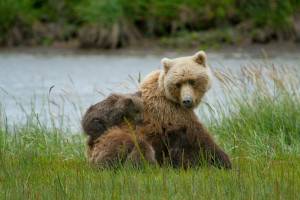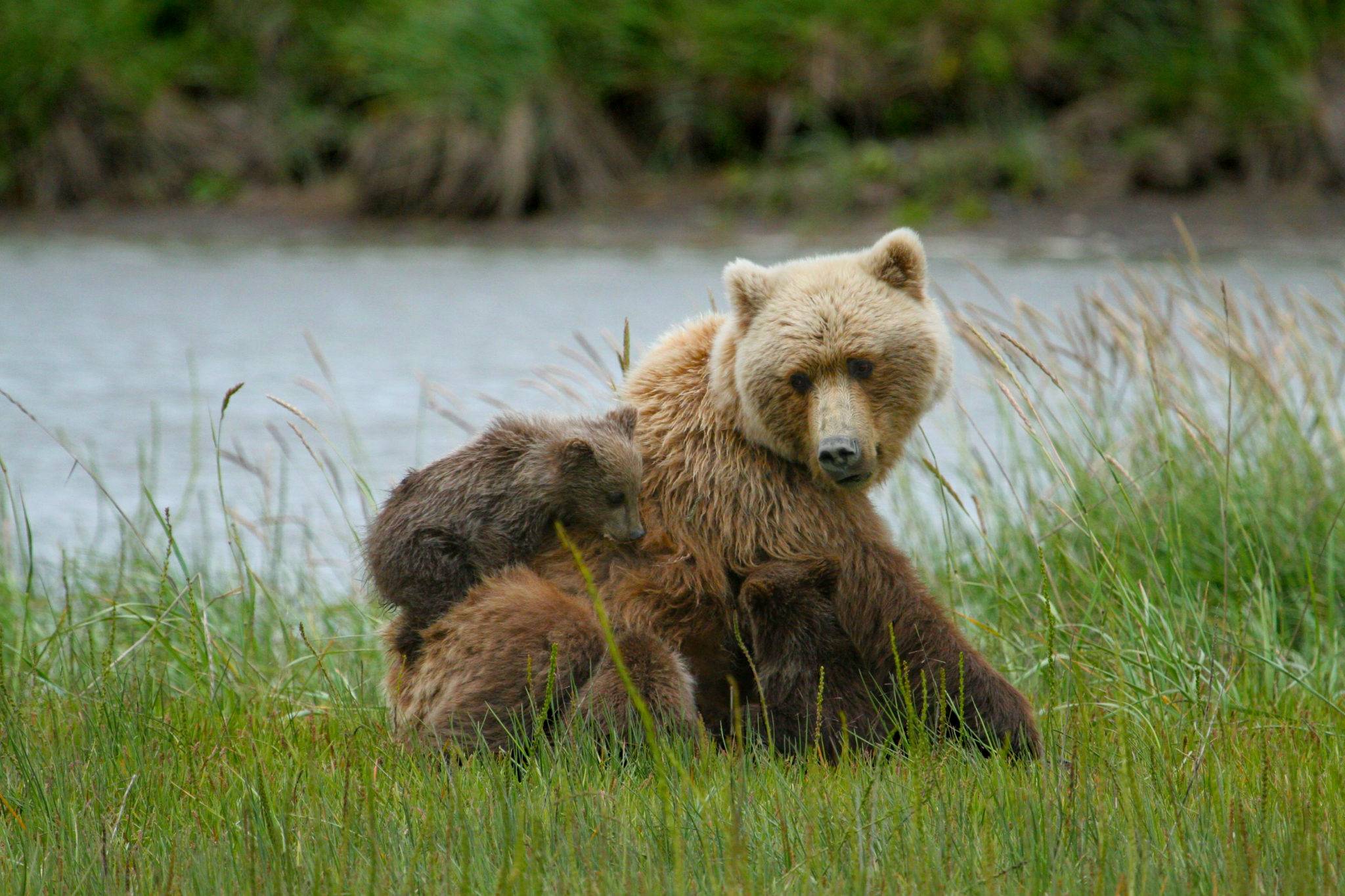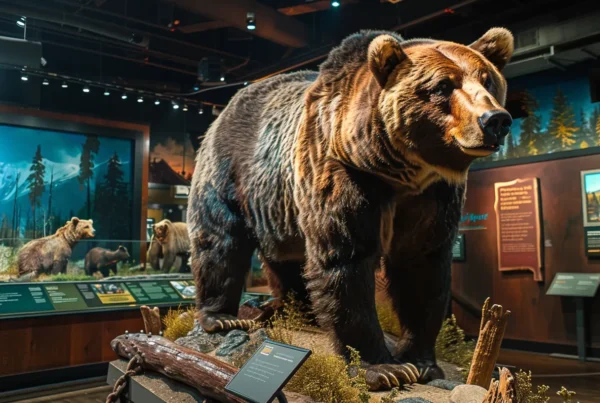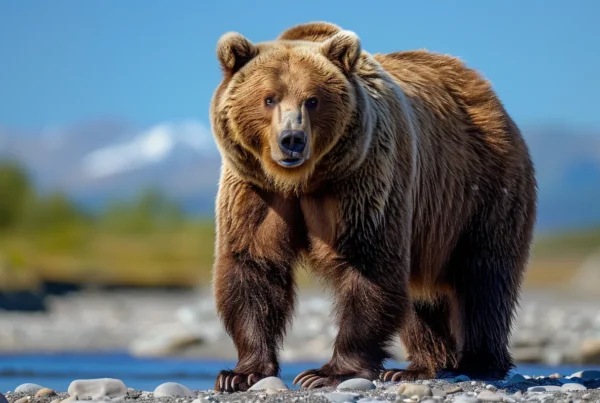Myth: Bears are always
afraid of fire.
Tell that to the Arizona black bear that pulled leftovers out of a campfire abandoned by two hikers who watched nervously from afar as the bruin sifted through the hot coals. Or Scott Kronberg, a USDA animal scientist, who startled a grizzy sow with two cubs a mile up Alaska’s Castner Glacier. The bear ran at him, so he lay face down in a small, snow-filled depression. The protective griz slapped the top of his pack; the force bounced him nearly a foot off the ground. The blow was hard enough to somehow ignite matches in the pack, which then caught fire. The griz didn’t immediately run from the flames. Kronberg played dead until the bear lost interest and moved away. Then he extinguished his burning pack with snow.
Myth: Bears can’t run downhill.
Running from a bear is always a bad idea (unless unless you’re within seconds of safe harbor, like a cabin or car). Not only could it trigger a chase response, bears can also sprint faster than a racehorse (35 mph) over short distances. People used to advise that you should run downhill to evade bears, since they would be hampered by short forelegs on steep descents. Not true. Indeed, Editor Dennis Lewon was once trail running in California, rounded a blind corner, and almost collided with a bear that was careening downhill at full speed. “We missed each other by feet,” he says.
Myth: Bears can’t climb trees.
A quarter-ton bruin doesn’t look like a natural climber. But it is. When it comes to evading an aggressive black bear, scaling a tree is one of the worst things you can do. Not only can bears climb better than you, but once up a tree, you’ve got nowhere else to go. (Grizzlies aren’t as adept climbers as black bears, but they’ve been known to go after people who tried to escape vertically.) Black bears are also skilled at arboreal combat: Bears sometimes fight each other in trees, and the one on the bottom has the advantage, since it’s hard to reach down and fight from above. Need proof of their climbing? If you’re one of the few people in the country who didn’t see the photo of the bear who scaled a tree on the University of Colorado campus—and then fell out after being tranquilized—just Google “Boulder bear.”
Myth: A standing bear is about to attack.
Actually, a bear will stand on its hind legs simply to get a better view. But a curious bear can look like a menacing bear when you’re nervous. Gear Editor Kristin Hostetter had just finished a curry dinner in Wrangell-St. Elias National Park when two bears approached. They stopped about 50 feet away, then stood up on hind legs, noses twitching. Uh-oh. But Hostetter and her partner made noise and after a minute, the bears left.
Myth: Bears are unpredictable.
Like most animals, bears exhibit body language that offers clues to their intentions. For example, a bear that’s clacking its teeth and huffing and slapping the ground is trying to avoid a fight by scaring you away. Take the hint and leave.
Myth: A bear that has tasted human food won’t eat wild food any more.
Bears are opportunistic eaters, and they need a lot of calories. Result: They’ll eat what they can find. But even the worst food-conditioned bears will happily eat natural food if it’s plentiful. Conflicts increase during droughts and other times when the wild stuff is scarce—and human food is easy to get.
Myth: Bear bells can actually attract bruins.
In parks where the regular use of bells has trained bears to associate the sound with humans, they may help prevent surprise encounters. But there’s a downside: The sound of bells doesn’t carry well, and not all bears “know” what it means. Signal your presence by talking loudly or singing songs.
Myth: Bears have poor eyesight.
They can see as well as you. That’s why it’s almost always prudent to alert bears to your presence and let them get a good look at you. (Exception: In some cases, like a mother grizzly with cubs, you could trigger an attack with threatening signals, like yelling or waving your arms.)
Myth: It’s dangerous to go into bear country when menstruating.
There’s no evidence that menstruation increases the likelihood of an attack. Store used hygiene products (sealed) with your toiletries in a bearproof container.
Myth: Relocating a “nuisance” bear will solve the problem.
Removing a human-habituated bear won’t change what it’s learned, and it won’t solve the larger problem. Something attracted the bear—probably pet food or garbage or compost—and if the attractant isn’t removed, another bear will simply take its place.
Myth: One of the most dangerous encounters is getting between a mother bear and her cubs.
That’s true for grizzlies, but not black bears, which can tree their cubs when they feel threatened. A mother grizzly, however, might act to defend her cubs, especially if she’s surprised. Either way, it’s time to quietly and calmly retreat.
Myth: A charging bear is an attacking bear.
Bears often bluff charge in order to scare you away. A bluff charge almost always involves other warning signals, like huffing and jaw popping. They’ll veer off or stop short at the last second. It can be very difficult to distinguish a bluff charge from a real one in the heat of the moment, but a bluff usually begins with a hopping or bouncing motion, the head up (not down, like in a real attack), with legs stiff and ears forward.
Myth: Most bear attacks are simply bad luck.
Few incidents can be explained by merely being in the “wrong place at the wrong time.” Surprise encounters, which lead to the majority of attacks, can be prevented by making noise. “Given a chance,” says biologist Tom Smith, “bears will likely get out of the way, unnoticed, as bears do thousands of times a summer without hikers ever knowing.”





